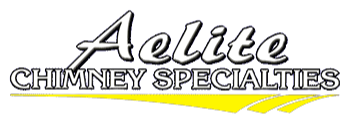Certified Video Chimney Inspections
When the National Fire Protection Agency (NFPA) adopted three distinct levels of inspection into its code in 2000, it revolutionized the chimney sweep business, proving to be a great thing not only for homeowners but for chimney sweep companies, too. Prior to that, when you hired a chimney sweep you could be getting a very different service depending upon who came out to do the work. Furthermore, you had to simply trust your chimney sweep when they said that they’d done the work you’d paid them for, or that they’d discovered a problem inside your flue. Now, thanks to video scanning technology and the three levels of inspection specified by the NFPA, chimney sweeps can show homeowners live footage of their chimneys—the good, the bad, and the hazardous. According to Chimney Safety Institute of America Director of Education Ashley Eldridge, “A chimney inspection is like an annual dental check-up. It’s preventative maintenance that helps minimize potential hazards. Sometimes, maintenance requires extra diligence.”
What Your Chimney Inspector Will Be Looking For:
- Signs of water damage. Capable of causing damage to both the exterior and interior of your home, a leaking chimney will make itself known in the form of rusted damper assemblies, deteriorated metal or masonry, rusted fireplace accessories, rotting wood or water-stained walls or ceilings. Cracked or deteriorated flue lining systems and leaning or “settled chimneys” can also indicate water damage.
- Excessive creosote buildup. Creosote—the pollutant left behind once you’ve burned a fire—builds up over time, coating the walls of your chimney’s flue. This highly-flammable material becomes especially dangerous in large quantities, but a professional sweep of your chimney will be able to remove most of it.
- Carbon monoxide risks. Our chimney inspectors will be looking for eroding mortar joints and other factors that can increase the risk of carbon monoxide poisoning. When masonry is in disrepair or flue liners are cracked or deteriorating, heat is allowed to transfer rapidly to nearby combustibles, allowing dangerous gases to leak into your living areas.
- Evidence that a fire has already occurred. You may be surprised to hear that many chimney fires go undetected, even though they may have done significant damage to your chimney. In masonry chimneys, fires can end up melting mortar, cracking tiles, collapsing the liner, and/or damaging the exterior masonry—all things that put you at risk of another, more catastrophic fire. During a video inspection of your chimney, a professional will look for signs that your chimney has been damaged by fire.
The Three Levels Of Chimney Inspection
Depending on various circumstances, risk factors, and frequency of use, the NFPA recommends having one of these three inspections done annually:
Level 1 Chimney Inspection: You will need a Level 1 inspection—the most basic inspection—if you haven’t changed anything about your heating appliance or venting system or the way you use it. This inspection is ideal for a chimney under continued service. A technician will examine all readily-accessible portions of your chimney’s exterior and interior, checking for basic structural soundness of your chimney and flue, ensuring proper installation and connections, and verifying that your chimney isn’t being obstructed by debris or combustible deposits.
Level 2 Chimney Inspection: You will need a Level 2 inspection if you’ve changed something about your chimney—for instance, if you’ve had your chimney relined or replaced the appliance. You’ll also need a Level 2 inspection if you’ve recently sold or transferred a property or if there’s been a malfunction, building fire, chimney fire, earthquake or weather event. This inspection includes all the same checkpoints as a Level 1 inspection but also looks at accessible parts of your chimney’s exterior and interior—such as your attics, crawl spaces, and basements.
Level 3 Chimney Inspection: You will need a Level 3 inspection when a Level 1 or Level 2 inspection has uncovered a hazard and it’s been determined that special tools are needed to access parts of the chimney or flue. As necessary, removal or destruction of parts of your chimney may be necessary to get to areas where hazards are suspected.
Have questions about the differences between chimney inspection levels? We’d be happy to answer them for you. Call Aelite Chimney at (815) 363-1242 for more information or click here to schedule an inspection of your chimney today.
A complete inspection of your chimney may uncover a need for certain repairs. Rest assured that the specialists at Aelite are ready and able to get the job done right.
